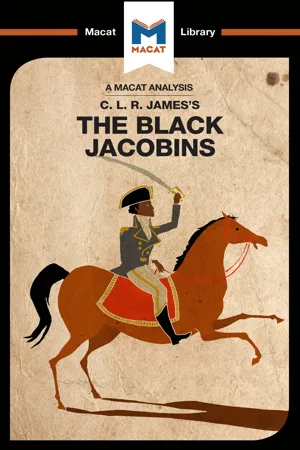
- 104 pages
- English
- ePUB (mobile friendly)
- Available on iOS & Android
An Analysis of C.L.R. James's The Black Jacobins
About this book
Today we take it for granted that history is much more than the story of great men and the elites from which they spring. Other forms of history – the histories of gender, class, rebellion and nonconformity – add much-needed context and color to our understanding of the past. But this has not always been so. In CLR James's The Black Jacobins, we have one of the earliest, and most defining, examples of how 'history from below' ought to be written.
James's approach is based on his need to resolve two central problems: to understand why the Haitian slave revolt was the only example of a successful slave rebellion in history, and also to grasp the ways in which its history was intertwined with the history of the French Revolution. The book's originality, and its value, rests on its author's ability to ask and answer productive questions of this sort, and in the creativity with which he proved able to generate new hypotheses as a result. As any enduring work of history must be, The Black Jacobins is rooted in sound archival research – but its true greatness lies in the originality of James's approach.
Frequently asked questions
- Essential is ideal for learners and professionals who enjoy exploring a wide range of subjects. Access the Essential Library with 800,000+ trusted titles and best-sellers across business, personal growth, and the humanities. Includes unlimited reading time and Standard Read Aloud voice.
- Complete: Perfect for advanced learners and researchers needing full, unrestricted access. Unlock 1.4M+ books across hundreds of subjects, including academic and specialized titles. The Complete Plan also includes advanced features like Premium Read Aloud and Research Assistant.
Please note we cannot support devices running on iOS 13 and Android 7 or earlier. Learn more about using the app.
Information
Table of contents
- Cover Page
- Title Page
- Copyright
- Contents
- Ways In To The Text
- Section 1: Influences
- Section 2: Ideas
- Section 3: Impact
- Glossary of Terms
- People Mentioned In The Text
- Works Cited